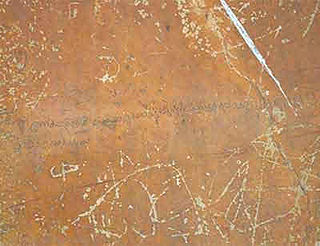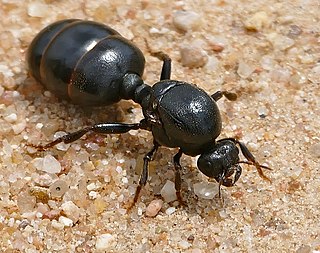
The Sinhala script, also known as Sinhalese script, is a writing system used by the Sinhalese people and most Sri Lankans in Sri Lanka and elsewhere to write the Sinhala language as well as the liturgical languages Pali and Sanskrit. The Sinhalese Akṣara Mālāva, one of the Brahmic scripts, is a descendant of the Ancient Indian Brahmi script. It is also related to the Grantha script.

Sinhala, sometimes called Sinhalese, is an Indo-Aryan language primarily spoken by the Sinhalese people of Sri Lanka, who make up the largest ethnic group on the island, numbering about 16 million. Sinhala is also spoken as the first language by other ethnic groups in Sri Lanka, totalling about 2 million people as of 2001. It is written using the Sinhala script, which is a Brahmic script closely related to the Grantha script of South India.
Addararachchige Gunendra Kamal, popularly as Kamal Addararachchi, is an actor in Sri Lankan cinema, theatre and television, as well as a singer and presenter.Widely regarded as one of the greatest Sinhala actors of all time, Addaraarachchi made his debut as an actor in Gamini Fonseka's 1981 film Sagarayak Meda, whilst he was a still a student at school. Since the late 1970s, he has appeared in a variety of roles in many films and teledramas. He has acted in over 40 films, 20 teledramas and 6 stage plays, and won the Sarasaviya Best Actor Award for his role of Sobana in Jayantha Chandrasiri's film Agnidahaya in 2002.

The main languages spoken in Sri Lanka are Sinhala and Tamil. Several languages are spoken in Sri Lanka within the Indo-Aryan, Austronesian, and Dravidian families. Sri Lanka accords official status to Sinhala and Tamil, and English as a recognised language. The languages spoken on the island nation are deeply influenced by the various languages in India, Europe and Southeast Asia. Arab settlers and the colonial powers of Portugal, the Netherlands and Britain have also influenced the development of modern languages in Sri Lanka. See below for the most-spoken languages of Sri Lanka.

Films produced in Sri Lanka ordered by the date of release.

The Sinhala Hound is a landrace of dog from Sri Lanka.

Carebara diversa, the East Indian harvesting ant, is a species of marauder ant widely distributed throughout Asia.

Mirihana Arachchige Nanda Malini Perera, popularly as Nanda Malini, is a Sri Lankan musician. One of the best known and most honoured singers of Sri Lanka, Malini's choice of singing themes are based on real life and social-cultural situations. Her songs intricate notional ideas of relationships, life-circumstances, and emotions that stem out of human realities.
Sinhala Braille is one of the many Bharati braille alphabets. While it largely conforms to the letter values of other Bharati alphabets, it diverges in the values of the letters assigned toward the end of those alphabets.

Carebara is a genus of ants in the subfamily Myrmicinae. It is one of the largest myrmicine genera with more than 200 species distributed worldwide in the tropics and the Afrotropical region. Many of them are very tiny cryptic soil and leaf-litter inhabitants. They nest in rotten wood to which the bark is still adherent in the Afrotropical region, or may be lestobiotic nesting near other ant species. Some species are known to exist parasitically within termite nests. Little is known about the biology of the genus, but they are notable for the vast difference in size between queens and workers.

Carebara vidua is a species of ant in the subfamily Myrmicinae. It is currently listed as endangered because it is overly consumed for protein and used for medicine.
Carebara escherichi is a species of ant in the subfamily Formicinae. It is found in Sri Lanka.
Carebara bruni is a species of ant in the subfamily Myrmicinae. It is found in Sri Lanka and China.
Carebara ceylonensis is a species of ant in the subfamily Formicinae. It is found in Sri Lanka.
Carebara deponens is a species of ant in the subfamily Formicinae. It is found in Sri Lanka.
Carebara nana is a species of ant in the subfamily Formicinae, first described in 1863 by Julius Roger as Pheidologeton nanus. It is found in Sri Lanka.
Carebara pygmaea is a species of ant in the subfamily Formicinae. It is found in Sri Lanka, Borneo, Indonesia, Philippines.

Carebara castanea is a species of ant from the Myrmicinae subfamily. The scientific name of this species was first published in 1858 by Smith. It is found in Thailand, Laos, and China.









